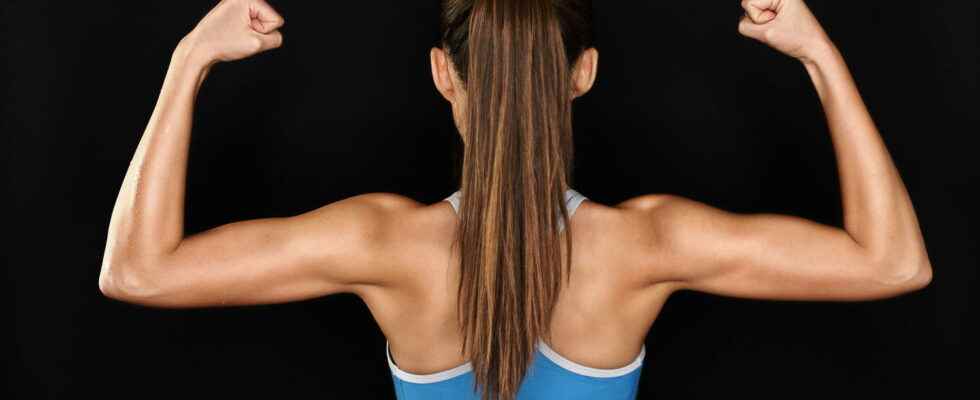Muscles are tissues of the human body composed of muscle fibers, which contract during body movements. There are 656 muscles in the human body. What is their role ? What are the main muscle diseases?
The muscles are contractile tissues which allow the realization of various gestures and in particular to animate certain parts of the body. The shape of the muscles can be elongated, flat or circular depending on their position in their body and their function. The muscles of the body as a whole represent 30 to 40% of the total body weight. They are mainly made up water (80%), but also include proteins (17%), glycogen (1%), lipids (1%) and mineral salts (1%).
The muscles are divided into muscle groups according to their anatomical location and their common function:
- The muscles of the head which make it possible to control the movements of the eyes and the face to show expressions but also to allow chewing for example. We mainly find the masseter, zygomatic, occipito-frontal or orbital muscles of the lips or the corugator (around the eyes).
- The neck muscles which allow you to turn your head in all directions and lift your shoulders. We mainly find the scalene muscles, the sterno-cleido-mastoid muscle or the trapezius.
- trunk muscles which mainly participate in breathing and spinal movement. The diaphragm muscle is one of the most important, but we also find the pectoralis major, the deltoids, the latissimus dorsi, the intercostal muscles, the square muscle of the loins or the spinal erector muscles.
- The muscles of the upper limbs such as the biceps, triceps, forearm flexors, or forearm extensors and finger muscles, which are used to pick up objects, lift, throw, or raise the arms.
- The muscles of the lower limbs such as the glutes, abductors, adductors, hamstrings, quadriceps, twins, or muscles in the feet that enable walking, running, sitting, or jumping.
There are three types of muscles depending on their location and function:
- The smooth musclesuch as those present at the level of the stomach, which function without voluntary stimulus (that is to say without the will).
- the cardiac striate muscle (the myocardium) which is a muscle different from the others, in particular because it is subject to the influence of hormones, and contracts involuntarily.
- The skeletal striated muscles which are linked to the bones and allow movement. They are controlled by the will.
The muscle can be the seat of various pathologies:
- Myomaa benign tumor of muscle tissue, which can affect any smooth muscle tissue or more rarely at the level of striated muscle fibers such as the myocardium and skeletal muscles.
- Myopathies, muscle diseases responsible for muscle weakness or exercise intolerance with pain, cramps, and a feeling of exhaustion. They can go as far as episodes of muscle destruction (rhabdomyolysis) caused by exercise. They are most often genetic and for the moment difficult to treat.
- Neuromuscular diseases that reach the nerve cells that control the muscles. They often cause atrophy of the muscles, ie a loss of volume and function. This is the case, for example, of spinal muscular atrophy, amyotrophic lateral sclerosis, peripheral neuropathies, or myasthenia gravis.
- Trauma (especially in athletes), which can appear suddenly or chronically. They generally cause pain during or after exercise with functional impotence. They range from simple contracture or curvature, to elongation, and even tearing (breakdown).
To prevent any muscle problems during physical activity, don’t forget to warm up well before practice, to drink during exercise and to stretch afterwards. In case of pain or discomfort, it is advisable to stop all activity and consult your doctor.
